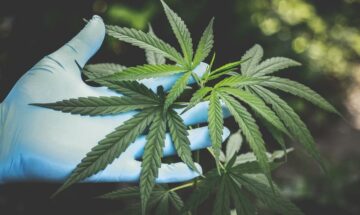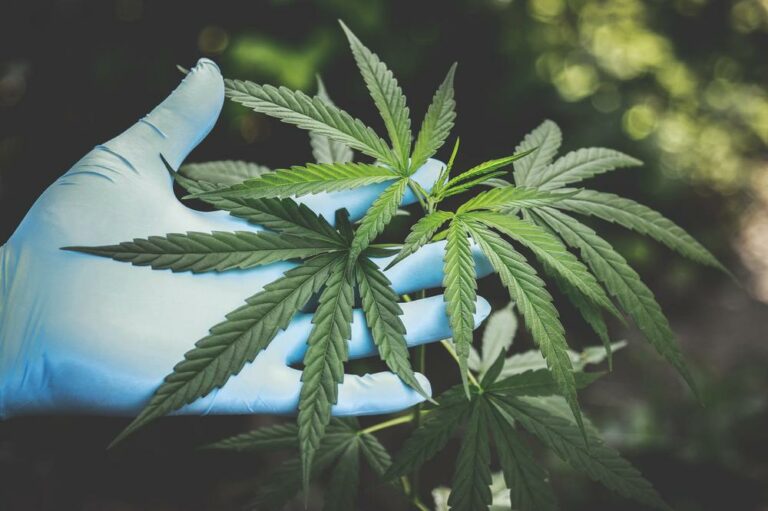
Are you curious about how deodorants work? CBD Clinicals can help you look for the best CBD deodorant that suits your needs.
FAQs
1. What evidence or research exists to say that CBD deodorants help?
Generally, CBD deodorant has traces of CBD (cannabidiol). CBD is one of the vital active ingredients in cannabis. It is typically derived from hemp(1).
A study indicated that CBD has antibacterial properties(2). Therefore, it may help lessen bacteria in the armpit and prevent body odor.
A 2021 study examined the antimicrobial potential of CBD. The results showed that the compound may have excellent activity against biofilms(3).
Biofilms are a group of microbial cells that can grow on various surfaces. These microorganisms play a crucial role in some infectious illnesses due to their increased resistance to antimicrobial agents(4).
Another research initially published in the Journal of the American Academy of Dermatology hypothesized that cannabinoids may soothe skin diseases(5).
CBD is one of the most notable cannabinoids found in the Cannabis sativa plant.
Associate Professor Robert Dellavalle, MD, of the University of Colorado School of Medicine, believed that the primary driver in cannabinoids’ therapeutic potential may be their anti-inflammatory properties(6).
Dellavalle also said that cannabinoids with no psychotropic effect may be a viable option for people who have used other medications for skin disease and itching without success(7).
CBD is a non-psychoactive cannabinoid(8). Therefore, CBD deodorant may help people with armpit rash and razor burns.
2. Is there any evidence that CBD deodorant is not good?
No, there is none. However, the FDA (Food and Drug Administration) has not approved CBD use for any medical condition aside from epilepsy(9).
3. Will CBD deodorant interact with any current medication I may be taking?
Cannabidiol may interact with many other medications, including herbal products, over-the-counter treatments, and prescription drugs(10).
Therefore, it is always best to speak with a clinician experienced in cannabis use to help you learn about CBD’s potential interaction with other medicinal products.
4. Are there other treatments or products I should consider alongside CBD deodorant?
Aside from using CBD deodorant, you can do a few things on your own to reduce body odor and sweating, such as(11):
- Taking a bath daily
- Choosing the appropriate clothing for your activity
- Changing your diet
- Trying relaxation techniques
5. Why should I use CBD deodorant?
CBD has purported therapeutic effects. As for CBD deodorants, most CBD companies use essential oils and terpenes to give their products a mild aroma.
Terpenes (terpenoids) are the compounds responsible for a plant’s taste, aroma, and pigments(12).
Meanwhile, flavonoids are naturally occurring polyphenolic compounds derived from various plants. These compounds have anti-inflammatory, antiviral, antioxidant, and anti-carcinogenic properties(13).
A 2019 study from the Journal of Medicinal Plants Research indicated that terpenes may also provide therapeutic benefits, including antiviral, anti-inflammatory, and antioxidant properties(14).
A 2021 study from the journal ACS Omega determined that more than 20 types of flavonoids were identified in Cannabis sativa, including cannflavins, which have antioxidative effects and anti-inflammatory properties(15).
With these properties, CBD deodorant may help address skin conditions, such as dark underarms and armpit rash.
In addition, CBD is relatively safe and well tolerated with a good safety profile(16). Hence, even people with sensitive skin may benefit from using CBD deodorant.
6. How often should I use CBD deodorant?
Ideally, it would be best to use CBD deodorant right after taking a bath. Regular application can help you feel fresh and clean.
7. How do I use CBD deodorant?
Glide the product on your underarms and reapply as necessary.
8. Is CBD deodorant psychoactive? Will it get me high?
CBD is non-psychoactive(17). Hence, CBD deodorants will not give you a euphoric feeling.
- Cannabidiol (Cbd)-What We Know And What We Don’t
https://www.health.harvard.edu/blog/cannabidiol-cbd-what-we-know-and-what-we-dont-2018082414476 - Cannabidiol Is a Novel Modulator of Bacterial Membrane Vesicles
https://www.frontiersin.org/articles/10.3389/fcimb.2019.00324/full - The Antimicrobial Potential Of Cannabidiol
https://www.nature.com/articles/s42003-020-01530-y - Biofilms: Microbial Life on Surfaces
https://www.ncbi.nlm.nih.gov/pmc/articles/PMC2732559/ - Cannabinoids May Soothe Certain Skin Diseases, Say, Researchers
https://www.sciencedaily.com/releases/2017/04/170418094315.htm - Ibid.
- Ibid.
- Cannabidiol and Other Non-Psychoactive Cannabinoids for Prevention and Treatment of Gastrointestinal Disorders: Useful Nutraceuticals?
https://www.ncbi.nlm.nih.gov/pmc/articles/PMC7246936/ - FDA Regulation of Cannabis and Cannabis-Derived Products, Including Cannabidiol (CBD)
https://www.fda.gov/news-events/public-health-focus/fda-regulation-cannabis-and-cannabis-derived-products-including-cannabidiol-cbd - Cbd And Other Medications: Proceed With Caution
https://www.health.harvard.edu/blog/cbd-and-other-medications-proceed-with-caution-2021011121743 - Sweating And Body Odor
https://www.mayoclinic.org/diseases-conditions/sweating-and-body-odor/diagnosis-treatment/drc-20353898 - Therapeutic and Medicinal Uses of Terpenes
https://www.ncbi.nlm.nih.gov/pmc/articles/PMC7120914/ - Cosmeceuticals for Hyperpigmentation: What is Available?
https://www.ncbi.nlm.nih.gov/pmc/articles/PMC3663177/ - Therapeutic and Medicinal Uses of Terpenes
https://www.ncbi.nlm.nih.gov/pmc/articles/PMC7120914/ - Flavonoids in Cannabis sativa: Biosynthesis, Bioactivities, and Biotechnology
https://www.ncbi.nlm.nih.gov/pmc/articles/PMC7931196/ - Cannabidiol (CBD)
https://www.who.int/medicines/access/controlled-substances/CannabidiolCriticalReview.pdf - Cannabidiol and Other Non-Psychoactive Cannabinoids for Prevention and Treatment of Gastrointestinal Disorders: Useful Nutraceuticals?
https://www.ncbi.nlm.nih.gov/pmc/articles/PMC7246936/












